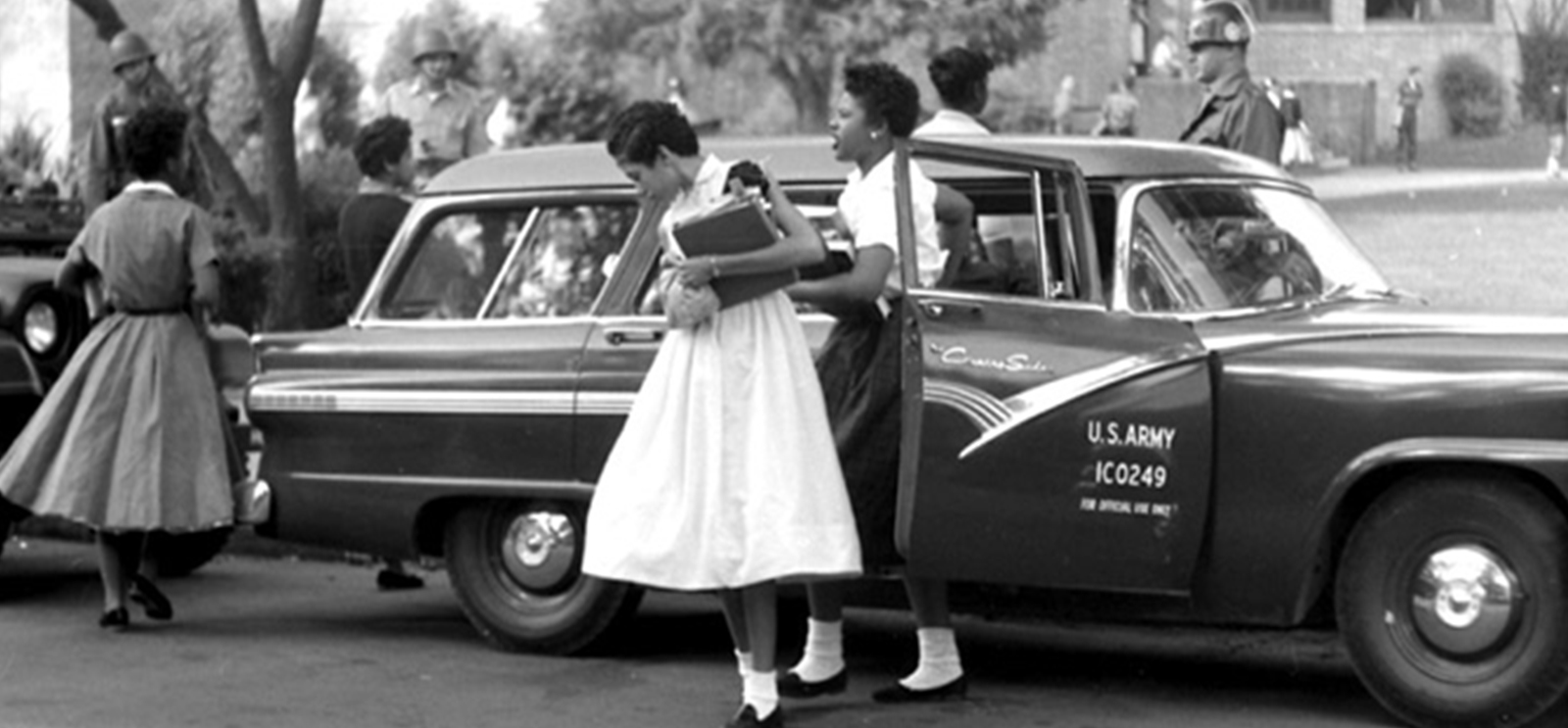
Students arriving at Central High School in Little Rock, 1957. (Photo by Bern Keating/Courtesy of the Library of Congress)
Teaching African American students, a Chicago scholar says, means asking tough questions.
For Chicago historian Adam Green, AB’85, the history of black education, and the triumphs and struggles of African American students, is personal. His father, Ernest Green, was one of the Little Rock Nine, who, with the help of federal troops and President Dwight Eisenhower, integrated Little Rock Central High School in 1957. “In many ways,” says Green, “the history of African American education is the history of African Americans.”
An associate professor of history who specializes in urban and African American history and comparative racial politics, Green spoke at a November symposium organized by the Univeristy’s Urban Teacher Education Program (UTEP). Before an audience of about 55 people, among them UTEP students preparing to teach in Chicago Public Schools, he discussed some of the complexities of African American education: the lingering legacy of segregation, the persistent lag in black students’ academic achievement, the social and economic inequalities that often find their way into the classroom.
Understanding today’s problems requires a look back, Green said. In 1865 freed slaves were hungry for education. Recalling a conversation with Lerone Bennett, former executive editor of Ebony, Green said, “All across the South, African Americans wanted to be educated more than anything else.” Evidence abounds in Booker T. Washington’s autobiography Up From Slavery and chronicles from 19th-century school teachers. As Bennett told Green, the cry from African Americans was, “Books! Books! Give us books!”
Today much of that hunger has been lost. “Now it’s hard to go places and see large numbers of black children or black adults saying, ‘Give us learning,’” Green said. In part, he argued, that’s because “I’m not sure that we always collectively believe that the work we’re trying to do as teachers is in service of a higher purpose. We have to find a way to bring that into our work, because without it, all you’re trying to do is compel people to realize a set of institutional goals.”
He added that anyone preparing to teach should come to terms with the history of black education in America: segregation, inequality. “We have to be honest, but not sensational,” he said, “about the deficits that we encounter, in terms of students’ experience, environments, the worlds that students come from.” One problem, he said, is that often education is defined as a discrete actvity “independent of environmental and contextual conditions.” He thinks it should be a more holistic project, urging teachers to impart a “sense of what it means to encounter a love of books as something that not only educates you, prepares you for a career, gives you an escape, but makes you well.” Historically, he said, “that’s one of the reasons African Americans invested so deeply in education: because it was something that could make them well.”
During the Q&A, one woman questioned the single-minded push toward college—a process that often begins as early as preschool. Green agreed that although “it’s hard to imagine education reaching its full and appropriate culmination” without the prospect of college, there are different ways to envision college—community colleges, professional programs, trade schools. A better way to judge secondary education’s success, he added, is not by how many students it pushes into higher education but by how many finish, and what they do while they’re there.
Green offered this final thought: although there is a paradox in encouraging black students’ participation in a system that for many years was systematically unfair, educators still must “commit ourselves to the struggle.”
